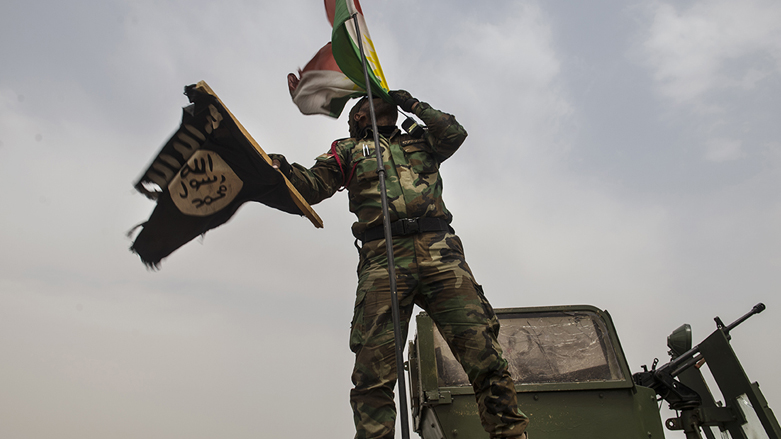ERBIL (Kurdistan 24) – Kurdish security officials have warned that the so-called Islamic State is intensifying its activities in northern Iraq, spreading insurgency attacks on a broader range.
According to a Sunday Times article published on Sunday, Islamic State terrorists have killed 14 Iraqi Security Forces (ISF) members and injured another 20 in a recent series of attacks. The report pointed out that Islamic State extremists are still hiding inside caves and tunnels in areas that fall between the Peshmerga and ISF, attacking security bases under cover of night.
Security officials in those areas expressed their concern that the Islamic State might re-organize and gain enough strength to pose a military threat in those regions if the situation is left unresolved.
General Sirwan Barzani, the Peshmerga commander in charge of the Gwer-Makhmour unit, told The Sunday Times that “ISIS has the freedom of movement in the belt-shaped territories along the edges of [the] Kurdistan Region borders between the Peshmerga forces and ISF.”
Gen. Barzani also expressed his concern that the recent attack might be “just a start,” warning it could “get worse in the new year if they continue to move freely and regain their strength.”
“The terrorist group has changed its strategies as they don’t have the capacity to engage in a traditional fight, but they are using guerrilla warfare tactics, as most of their militants are hiding in the mountains areas,” Barzani added.
Officials from Kurdistan, along with civilians in the disputed territories, have long called for a joint security plan between the Peshmerga forces and the ISF to fill the security gaps in the disputed areas. However, so far, there has been no solid attempt from Baghdad to address the problem.
Although Iraq had declared a “final victory” against the terrorist organization in December 2017, the so-called Islamic State continues to carry out sporadic attacks.
They include bombings, assassinations, and kidnappings in previously liberated areas, particularly in remote villages and regions, where security forces have difficulty monitoring the movements of the terrorist organization.

